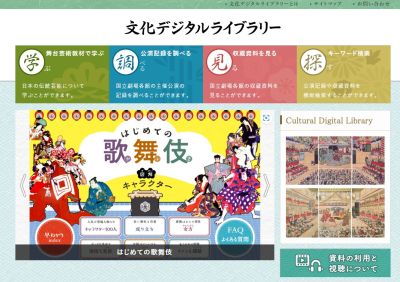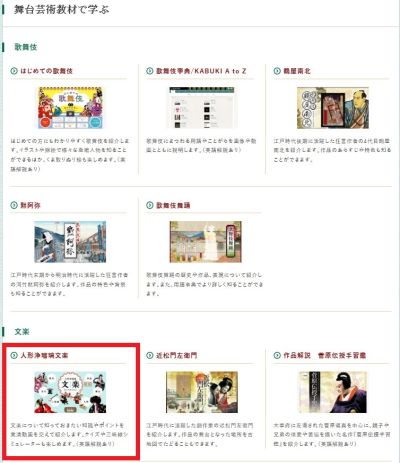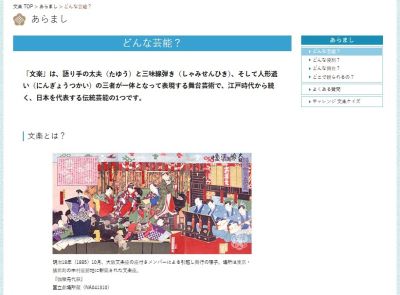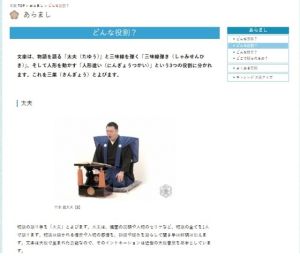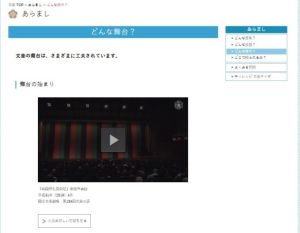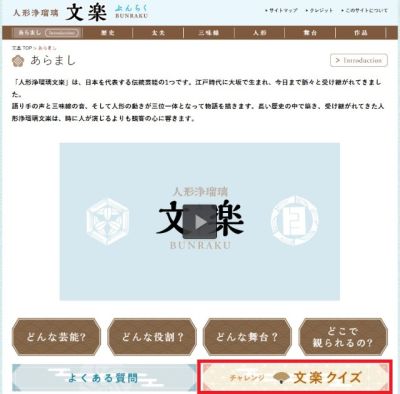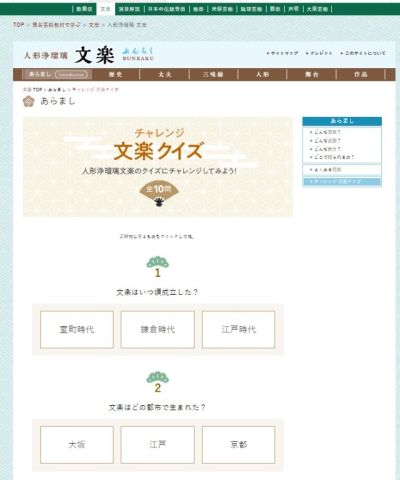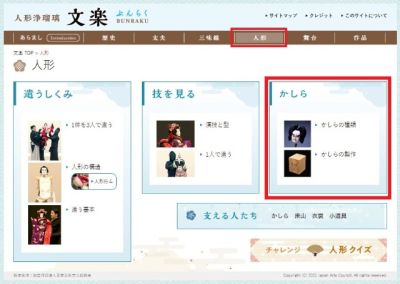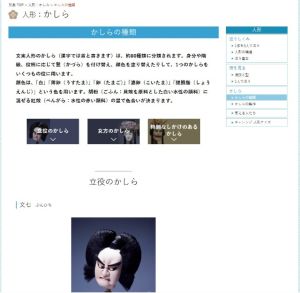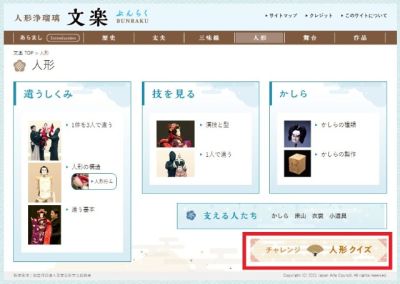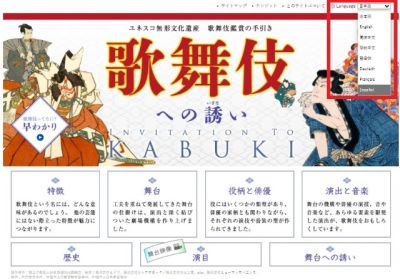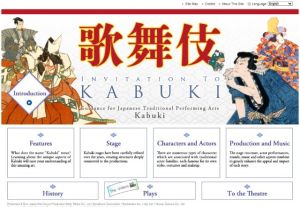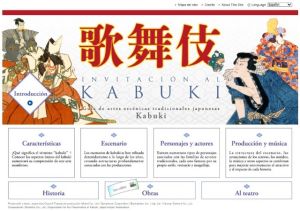Here, you can learn about traditional Japanese performing arts such as Kabuki and Nohgaku.
If you're interested in learning more about traditional Japanese performing arts while looking at photos and videos, this site is for you.
- You can learn about Kabuki, Bunraku, Nohgaku, traditional music, Rakugo, and more.
- Learn the history and titles of each performing art as well as key features of the characters and actors.
- There are all sorts of photos and videos.
- There are contents directed at people who don't know much about traditional Japanese performing arts as well as those who are, and want to know more.
- Some of the contents are available not only in Japanese, but also English, Chinese (Simplified and Traditional), Korean, German, French, and Spanish.
How to...
The Cultural Digital Library is operated by the Japan Arts Council.
On this site, you can learn about Kabuki, Bunraku, famous plays, traditional Japanese music, Nohgaku, and more.
Click 舞台芸術教材で学ぶ (Digital Teaching Materials).
You'll find contents about Kabuki, Bunraku, Famous Plays, Traditional Japanese Music, Nohgaku, Japanese Folk Performances, Ryukyu Folk Performances, Gagaku, Shomyo (Japanese Buddhist Chant), and Popular Performing Arts.
Take a look at Bunraku, for example.
Click 文楽 (Bunraku) and select 人形浄瑠璃文楽 (Ningyo Joruri Bunraku).
If you're wondering what Bunraku is, first watch the Introduction.
You'll learn the basic features of Bunraku.
There is a video.
Read about what kind of performing art Bunraku is, too.
There are also contents about performers and their roles, the structure of a Bunraku stage, where to watch a play, and more.
Check out what interests you.
Now do you know a little bit about Bunraku?
You can also try the Challenge Bunraku Quiz to see how much you know.
Click チャレンジ 文楽クイズ (Challenge Bunraku Quiz) on the Introduction page (Japanese only).
To learn more, also look at 歴史 (History), 太夫 (Tayu), 三味線 (Shamisen), 人形 (Bunraku Dolls), 舞台 (Stage), and 作品 (Works).
Let's take a look at the doll heads called "kashira".
As you can see, there are many different types of heads. How are they different? Read and find out.
There is a quiz about the dolls, too. Try the チャレンジ 人形クイズ (Challenge Doll Quiz) as well (Japanese only).
If you need to, you can read Japanese kanji with furigana by using the ひらひらのひらがなめがね(Introduction article).
Scroll down the top page to find the Introduction of UNESCO Intangible Cultural Heritage.
You can learn about Nohgaku, Bunraku, and Kabuki.
This content is available not only in Japanese, but also in English, Chinese (Simplified and Traditional), Korean, German, French, and Spanish.
Let's take a look at Kabuki, for example.
Select your language from the top right-hand corner of the screen.
First read in Japanese, then read in a language you're comfortable with, to check how much of the Japanese you understood.
Doing it this way, you can study Japanese while learning about traditional Japanese performing arts.


